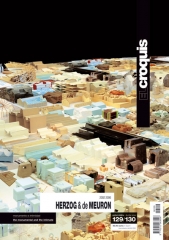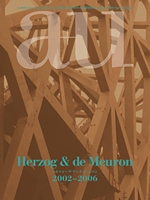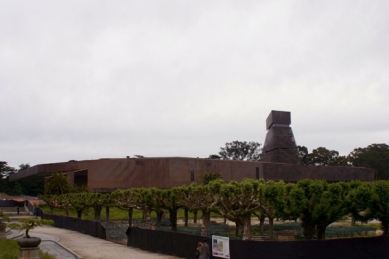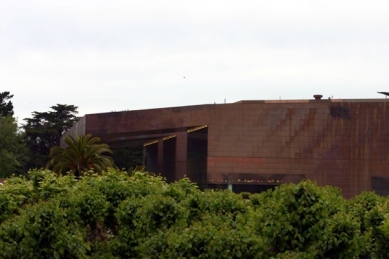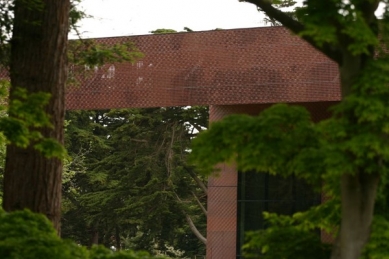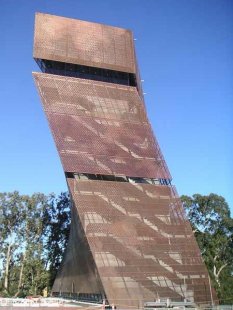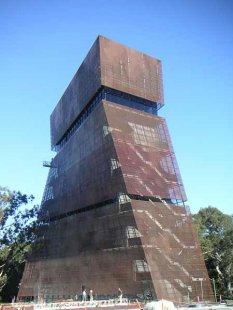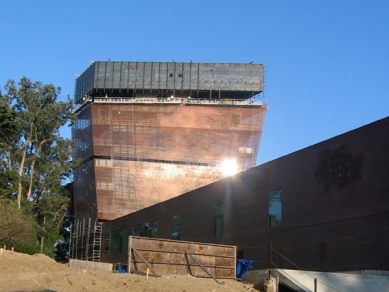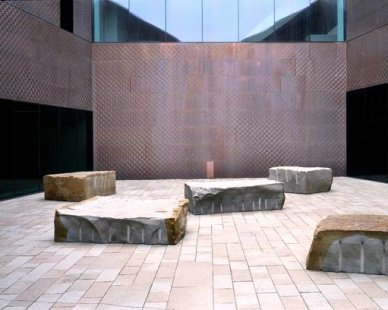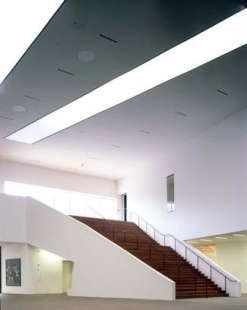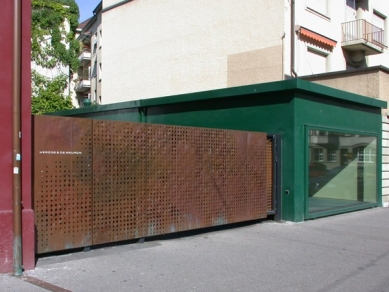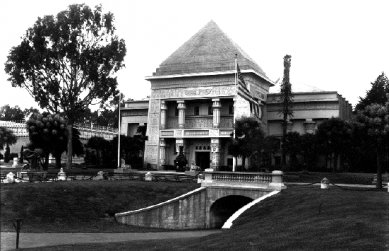
de Young Memorial Museum

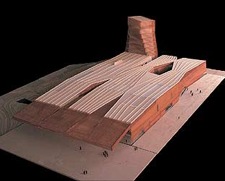 |
According to Aaron Betsky, the museum plays one important role: it is not just an elegant collection of loft-style museum spaces wrapped in sensuous skin, whose patina softens the harsh characteristic of all new buildings, which is that they look foreign. The museum also teaches the residents of San Francisco to understand their own landscape in a new way. It mirrors the outline of the park and the almost imperceptible undulations of the terrain that once were here, transforming them into a tangible monument. It adopts the subtle colors of the vegetation in the park, summarizes them, turns them around, and the result is an impressive façade with a mottled pattern. The museum creates spaces for hidden gardens where the essence of what people have planted around is made visible – and in addition, one can sense their pleasant fragrance.
Through its façade, the museum seeks to remind of the ground from which it grows. However, the architects did not take a straightforward approach as was done with Schaulager. The spirally twisted 30-meter-high observation tower at the northeastern corner of the museum may refer to the nearby San Francisco skyline. A less metaphysical fact is that from here, a beautiful panoramic view is offered, which can also be enjoyed for free by passersby from the park, in addition to museum visitors. A giant cut into the façade leads you to the main entrance of the museum, through which you walk into an open courtyard and from there into a spacious foyer with an expanding staircase that leads to the upper floor of the permanent exhibition galleries. Space for temporary exhibitions is allocated in the basement.
As is always the case when intervening in the stereotypical lives of local residents, fiery protest actions have also occurred here. However, these would have arisen if any of the five finalists in the competition had won (Tadao Ando, Cesar Pelli, Antoine Predock, Rafael Viñoly, and Herzog & de Meuron). I am just surprised that this happens even in such a liberally minded city as San Francisco, which theoretically should have more understanding for world architecture.
The English translation is powered by AI tool. Switch to Czech to view the original text source.
0 comments
add comment



